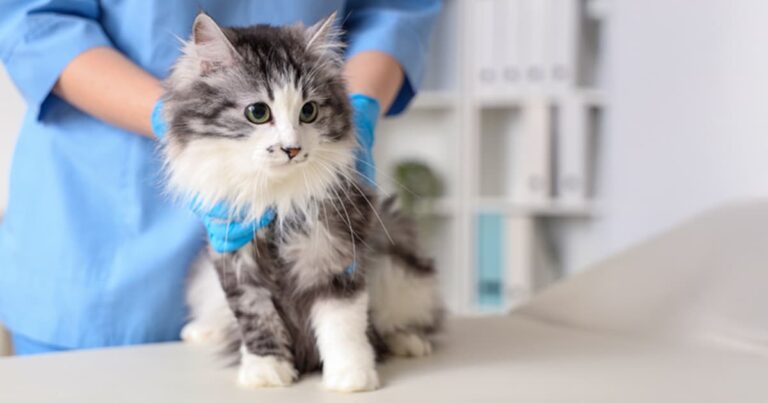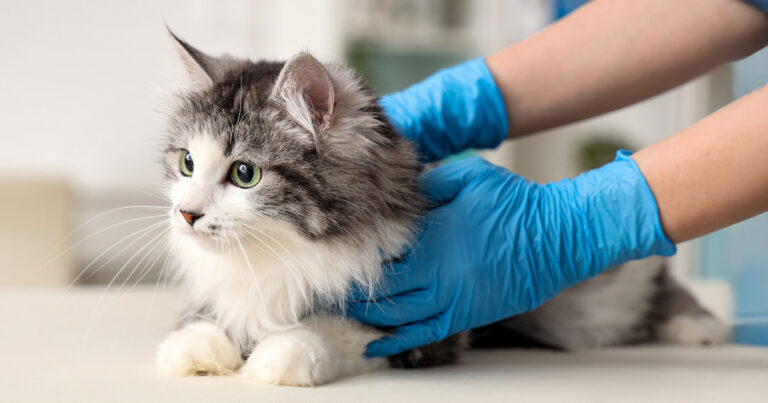Panting is a normal body function that helps cool dogs down when they’re hot. But heavy panting can also be a sign of stress, anxiety, pain or illness. Learn why dogs pant, what normal panting looks like and when it’s time to call your veterinarian.
Why Do Dogs Pant in Warm Weather?
There are a few reasons why dogs pant, but they primarily use panting as a way to regulate their body temperature. Unlike humans, who use sweat to cool their body down, the only place dogs sweat is from their paw pads, which isn’t enough to regulate their temperature. A little heat is also lost through blood vessels close to the skin surface, but the most effective way that dogs cool their body down is by panting.
Panting circulates air quickly through the respiratory system, and evaporates water from a dog’s tongue, mouth and upper respiratory tract, which cools their body down. If dogs are hot, they pant more to release more body heat.
Water Goes Hand in Paw with Panting
Evaporation of water during panting is key to helping your dog’s body maintain a normal temperature. When dogs pant, they lose water from their bodies, which needs to be replaced to prevent dehydration. Your dog should always have access to some cool, fresh water, but hydration is especially important on a hot day. If you’re away from home during warm or humid weather, take a collapsible bowl and water bottles with you, so you can provide fresh water for your dog. Letting your dog drink from lakes or streams, especially slow-moving water, can be risky, as they may ingest water-borne bacteria or parasites that can cause illnesses like leptospirosis and giardiasis.
How to Help a Dog Panting Heavily Due to Hot Weather
If your dog is panting more than usual because they’re hot, cooling them down should be your first priority. First, move them to a shaded area or air-conditioned environment. Offer them cool (not cold) fresh water, but don’t force them to drink, and let them rest for a while. It’s important to watch for signs of overheating, which occurs when a dog can’t pant fast enough or the environmental temperature and/or humidity is too high, and their body temperature increases to dangerous levels.
Heat exhaustion signs include panting, moving slowly, lots of drooling, restlessness and red skin on the dog’s muzzle, ears and belly. If the dog’s temperature continues to rise above 104°F, they are at risk of developing heatstroke, which can be fatal. Symptoms of heatstroke include pale or red gums, staggering or wobbling when walking, seizures, weakness, fast heat rate, vomiting and loss of consciousness. Heatstroke is a medical emergency, and you should seek urgent veterinary care.
Brachycephalic dog breeds (dogs with smooshed-in snouts like pugs, Boston terriers and bull mastiffs) are at an increased risk of heatstroke because it’s more difficult for them to pant and get their body cooled down. Obesity can be another contributing factor to heatstroke. So if you have dogs who are at risk of heat exhaustion or heatstroke, protect them from summer’s heat.
It’s Not Hot. Why Is My Dog Panting Heavily?
If your dog is panting, but they’re not hot, it could be due to excitement or stress. Panting is a common sign of anxiety and stress in dogs, due to an increased heart rate and faster breathing. Along with panting, you may notice other symptoms like whining or yawning more than usual, extra-wide or panicked-looking eyes, their tail tucked between their legs and their hackles raised. Panting can also be a sign of pain or an underlying health condition (see below).
How to Calm a Panting Dog
You can help calm your dog by removing them from the stressful situation (if possible). For example, if your dog becomes stressed when guests come over or when something like the vacuum comes out, move your dog to another room and provide them with a safe space that has their favorite toys, blankets, food and water and anything else that may comfort them. You could also try playing soothing music or releasing pheromones that may help calm them. If your dog has intense fears, a certified behavior specialist may be able to help desensitize or countercondition your dog to their fears.
Do Dogs Pant When They’re in Pain?
A change in your dog’s behavior is a good indicator that they’re in pain or have a health concern, and that includes panting more than usual. Like when they’re stressed, pain can cause an increased heart rate and faster breathing, leading to increased panting. Other signs of pain in dogs include: pacing, whimpering, hiding, restlessness and out-of-character aggression or irritability. If your dog is panting more than usual, but it isn’t hot, or they suddenly start panting, it’s a good idea to make an appointment with your veterinarian, especially if they’re displaying other signs of pain or discomfort.
Can Panting Be a Symptom of Underlying Disease?
Yes. Certain metabolic conditions like Cushing’s disease (hyperadrenocorticism) are well-known for causing excessive panting, even when a dog is resting or in a cool environment. Other metabolic issues, such as diabetes and acid-base imbalances related to kidney disease or toxin exposure, can also lead to abnormal breathing patterns. In some cases, anemia may cause panting due to reduced oxygen delivery to tissues. If your dog is panting excessively and it doesn’t seem related to temperature, activity or stress, it’s important to consult your veterinarian to rule out these potentially serious conditions.
What Is Considered Excessive Panting in Dogs?
Panting is normal for dogs after exercise or playtime, and if they’re hot or excited. If your dog pants after these situations and then stops after they calm down, they’re probably OK. But if your dog’s excessive panting starts suddenly or continues for a long time, you should contact your vet. Normally, dogs take between 10 and 35 breaths per minute, depending on their size. A dog excessively panting will typically take more than 40 breaths per minute while they’re resting. If your dog is panting excessively or has noticeably labored breathing, contact your vet immediately.







